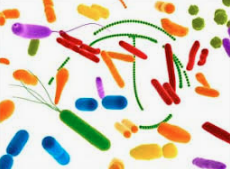IDENTIFICATION of BACTERIA Multiple Choice Questions :-
1. The gram-negative organisms is
A. Actinomyces
B. Bacillus
C. Clostridium
D. None of these
Answer: D
2. Catalase production is negative in which of the following?
A. Streptococcus
B. Salmonella
C. Proteus
D. Staphylococcus
Answer: A
3. Which of the following is a substitute for crystal violet used in gram-staining procedure?
A. Methylene blue
B. Bromocresol green
C. Safranin
D. Phenolpthalene
Answer: A
4. Which of the following inference(s) indicate(s) the ability of an organism to utilize citrate as a sole source of carbon in Simmon’s citrate medium?
A. Blue colour
B. Appearance of growth
C. Both (a) and (b)
D. None of these
Answer: C
5. The organisms that can be acid-fast stained is
A. Nocardia
B. Tubercle bacilli
C. Lepra bacilli
D. all of these
Answer: D
6. The primary stain of Gram’s method is
A. safranin
B. phenolpthalene
C. crystal violet
D. methyl red
Answer: C
7. At what concentration of sulphuric acid, Nocardia resists decolourization?
A. 0.5% sulphuric acid
B. 5% sulphuric acid
C. 10% sulphuric acid
D. 8% sulphuric acid
Answer: A
8. Which of the following is commonly used as Gram’s decolouriser?
A. Ethyl alcohol
B. Methyl alcohol
C. Acetone
D. A mixture of ethyl alcohol and acetone
Answer: D
9. Production of acetoin can be detected by which of the following tests?
A. Citrate test
B. Voges-Proskauer test
C. Methyl red test
D. Indole test
Answer: B
10. The production of sufficient acid by fermentation of glucose leads to decrease in pH such that pH of the medium falls below 4.5. Which of the following test can detect it?
A. Indole test
B. Methyl red test
C. Citrate utilization test
D. Voges-Proskauer test
Answer: B

IDENTIFICATION of BACTERIA Multiple Choice Questions with Answers
11. What is the colour of gram -postive bacteria on a gram staining?
A. Purple
B. Pink
C. Colourless
D. Green
Answer: A
12. What is the colour of gram-negative bacteria on a gram staining?
A. Purple
B. Pink
C. Green
D. Colourless
Answer: B
13. Which of the following is a primary stain for acid fast staining of mycobacteria?
A. Crystal violet
B. Carbol fuchsin
C. Geimsa
D. Methylene blue
Answer: B
14. The deinococci are gram-positive cocci and rods that are distinctive in their unusually great resistance to
A. radiation
B. desiccation
C. both (a) and (b)
D. extreme temperatures
Answer: C
15. Which of the following shows a positive urease test?
A. Proteus
B. Klebsiella
C. Both (a) and (b)
D. None of these
Answer: C
16. Which of the following(s) is/ are oxidase-positive bacteria?
A. Vibrio
B. Neisseria
C. Pseudomonas
D. All of these
Answer: D
17. What is the order of reagents used in the Gram stain?
A. Crystal violet, iodine, safranin, decolorizer
B. Crystal violet, iodine, decolorizer, safranin
C. Safranin, crystal violet, decolorizer, iodine
D. Crystal violet, safranin, iodine, decolorizer
Answer: B
18. Gram staining was developed accidentally in 1884 by
A. Alexander Fleming
B. Hans Christian Gram
C. Joseph Christian Gram
D. Robert Gram
Answer: B
19. Which of the following organisms can be demonstrated with silver impregnation method?
A. Vibrios B
. Salmonella
C. Spirochaetes
D. Shigella
Answer: C
20. Which of the following(s) show(s) positive results for phenylalanine deaminase test?
A. Providencia
B. Proteus
C. Morganella
D. All of these
Answer: D
21. The process of Gram staining is based on the ability of bacterial cell wall
A. to retain the safranin dye
B. to retain the crystal violet dye during solvent treatment.
C. to retain part of both dyes
D. none of above
Answer: B